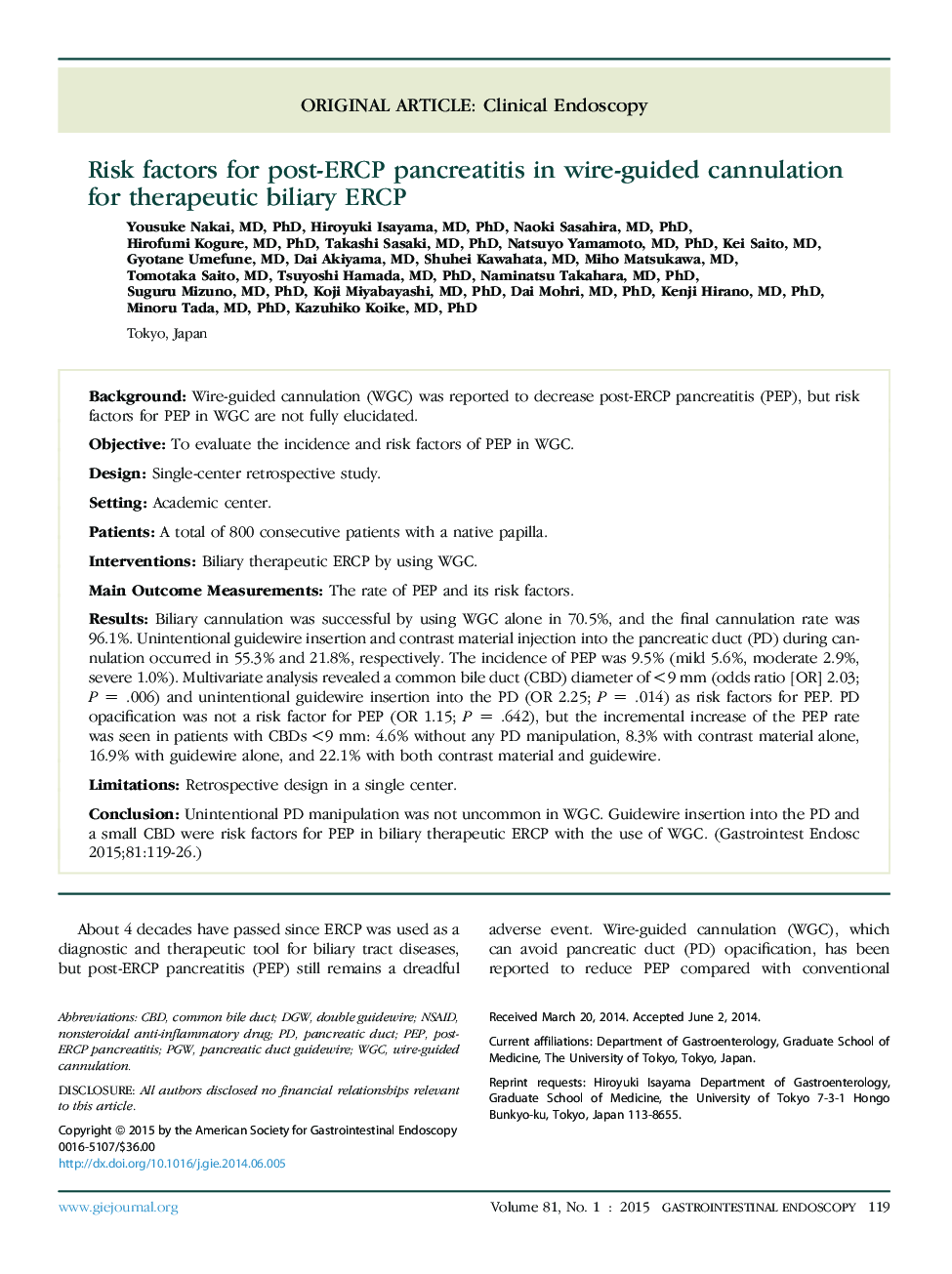| Article ID | Journal | Published Year | Pages | File Type |
|---|---|---|---|---|
| 3302578 | Gastrointestinal Endoscopy | 2015 | 8 Pages |
BackgroundWire-guided cannulation (WGC) was reported to decrease post-ERCP pancreatitis (PEP), but risk factors for PEP in WGC are not fully elucidated.ObjectiveTo evaluate the incidence and risk factors of PEP in WGC.DesignSingle-center retrospective study.SettingAcademic center.PatientsA total of 800 consecutive patients with a native papilla.InterventionsBiliary therapeutic ERCP by using WGC.Main Outcome MeasurementsThe rate of PEP and its risk factors.ResultsBiliary cannulation was successful by using WGC alone in 70.5%, and the final cannulation rate was 96.1%. Unintentional guidewire insertion and contrast material injection into the pancreatic duct (PD) during cannulation occurred in 55.3% and 21.8%, respectively. The incidence of PEP was 9.5% (mild 5.6%, moderate 2.9%, severe 1.0%). Multivariate analysis revealed a common bile duct (CBD) diameter of <9 mm (odds ratio [OR] 2.03; P = .006) and unintentional guidewire insertion into the PD (OR 2.25; P = .014) as risk factors for PEP. PD opacification was not a risk factor for PEP (OR 1.15; P = .642), but the incremental increase of the PEP rate was seen in patients with CBDs <9 mm: 4.6% without any PD manipulation, 8.3% with contrast material alone, 16.9% with guidewire alone, and 22.1% with both contrast material and guidewire.LimitationsRetrospective design in a single center.ConclusionUnintentional PD manipulation was not uncommon in WGC. Guidewire insertion into the PD and a small CBD were risk factors for PEP in biliary therapeutic ERCP with the use of WGC.
